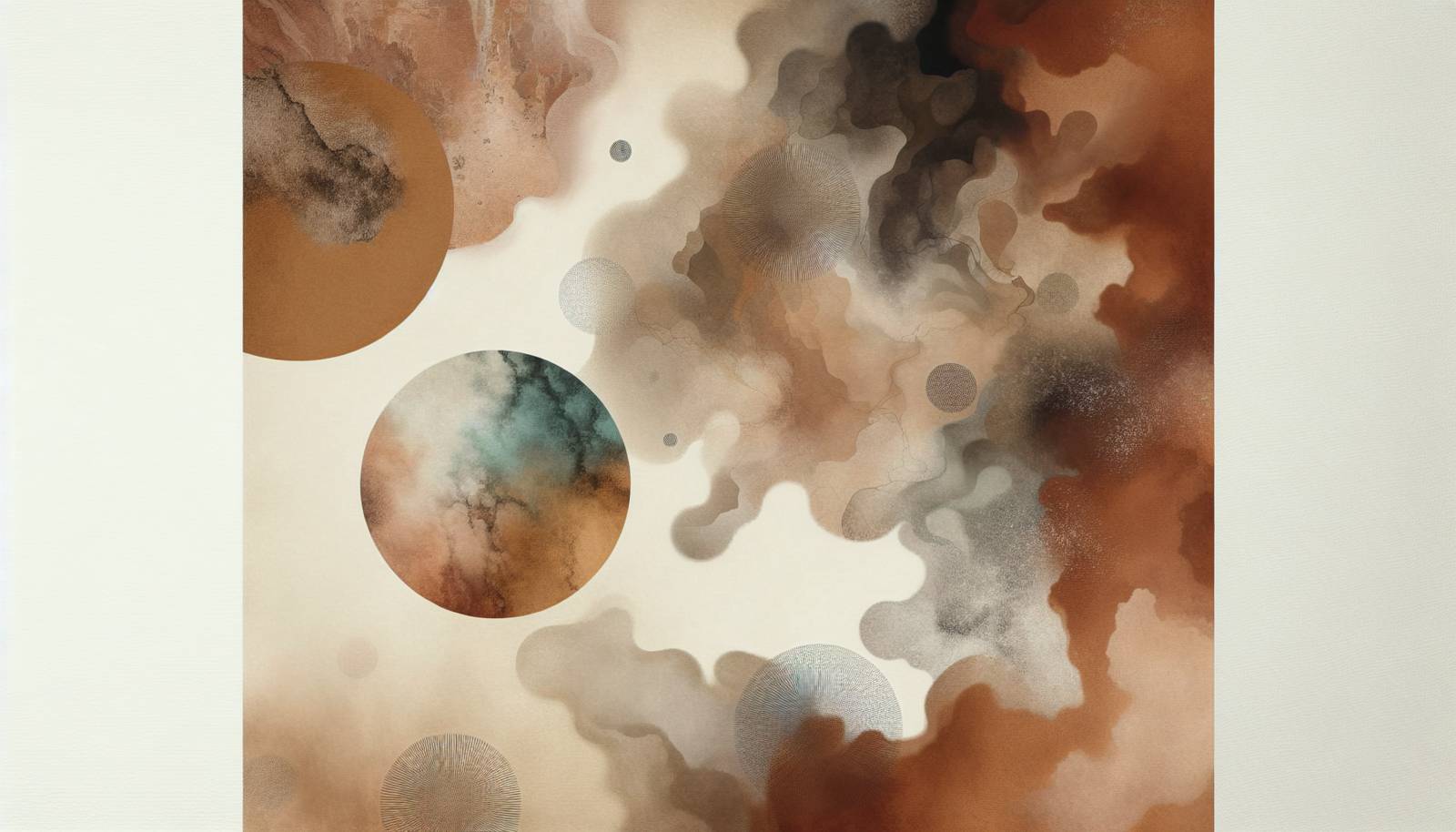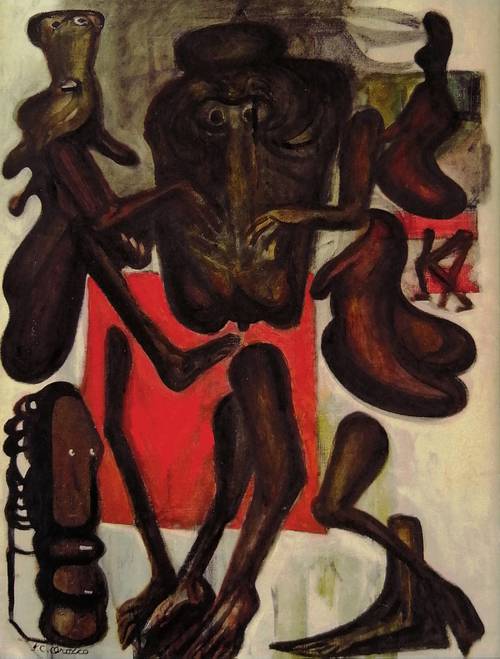
FAQ About The Influence of Afro-Surrealism in Contemporary Art

What is Afro-Surrealism?
Afro-Surrealism is an artistic and cultural movement that combines elements of African and Black cultural experiences with surrealist artistic frameworks. It seeks to explore the complex layers of identity, spirituality, and diasporic experiences through fantastical, dream-like, and metaphorical expressions. The movement draws from both traditional African narratives and contemporary issues faced by African-descended people globally.

How does Afro-Surrealism differ from traditional Surrealism?
While traditional Surrealism primarily emerged in early 20th-century Europe focusing on the unconscious mind and dream states, Afro-Surrealism contextualizes these elements within the lived experiences and histories of African and African-diasporic peoples. It emphasizes narratives related to identity, race, and historical trauma, offering a unique perspective that is often political and grounded in cultural reclamation.

Who are some notable Afro-Surrealist artists?
Notable Afro-Surrealist artists include those like Wangechi Mutu, whose work often fuses myth with contemporary cultural critique, and Ellen Gallagher, known for integrating abstraction with references to historical African American culture. Additionally, filmmakers like Terence Nance and writers such as D. Scot Miller contribute significantly to the movement with their visionary storytelling and cultural exploration.

What themes are commonly explored in Afro-Surrealism?
Afro-Surrealism often explores themes such as identity, race, the African diaspora, spirituality, and social justice. It investigates the complexities of the Black experience through symbolic and fantastical imagery, aiming to challenge perceptions and provoke thought around contemporary and historical realities faced by African-descended individuals.

How does Afro-Surrealism interact with the concept of identity?
Afro-Surrealism offers a lens through which artists can explore fluid and multifaceted identities. The movement uses surreal forms to deconstruct and reimagine notions of race, culture, and personal identity, allowing for a deeper inquiry into how these identities are formed, perceived, and transformed across different contexts and histories.

In what ways does Afro-Surrealism address spirituality?
Afro-Surrealism often integrates spiritual symbolism and themes, drawing on African spiritual traditions, mythologies, and symbols to explore connections with the divine and the metaphysical. This incorporation allows for a rich exploration of how African spiritual heritage intertwines with contemporary life, creating a dynamic dialogue between past beliefs and present realities.

What role does the African diaspora play in Afro-Surrealism?
The African diaspora plays a crucial role in Afro-Surrealism by providing a rich tapestry of experiences, stories, and cultures that inform the movement. Artists often draw inspiration from the diasporic journey, addressing themes of migration, displacement, cultural syncretism, and resilience. Afro-Surrealism thus becomes a platform to express the complexities of diasporic identities and histories.

How has Afro-Surrealism influenced contemporary art?
Afro-Surrealism has significantly influenced contemporary art by challenging traditional narratives and embedding African cultural perspectives within the broader art discourse. It has opened up new pathways for artistic expression, allowing for a more inclusive understanding of surrealism that incorporates diverse histories and experiences, often leading to a re-examination of identity, social justice, and memory in modern art.

What are some common artistic techniques used in Afro-Surrealism?
Artists working within the Afro-Surrealist framework employ a variety of techniques, including collage, abstraction, and multimedia installations. They often blend symbolism and fantastical elements with traditional African aesthetic forms, utilizing bright colors, intricate patterns, and dreamlike imagery to forge connections between past and present, reality and imagination.

Can Afro-Surrealism be found outside of visual arts?
Yes, Afro-Surrealism transcends visual arts and is also found in literature, film, and music. Writers and filmmakers explore surreal themes through narrative structures that delve into African and diasporic experiences. Musicians incorporate surrealist aesthetics in their music and performances, contributing to the movement by infusing elements of Afro-Surrealist imagination and symbolism.

What impact does Afro-Surrealism have on cultural narratives?
Afro-Surrealism impacts cultural narratives by providing alternative ways to articulate and visualize African and diasporic experiences. It challenges mainstream narratives by highlighting underrepresented stories, offering a reshaped understanding of reality that includes magical, mythical, and metaphorical elements. This movement thereby enriches cultural discourse by emphasizing the diversity and richness of Black experiences.

How do Afro-Surrealists portray historical themes?
Afro-Surrealists often portray historical themes by reimagining past events through a surreal lens, employing metaphors and symbols to comment on the impact of history on present identities and cultures. This approach allows for a critical reflection on colonialism, slavery, and empowerment, encouraging audiences to engage with a narrative that is both historically grounded and imaginatively expansive.

Is Afro-Surrealism a political movement?
While primarily an artistic movement, Afro-Surrealism is inherently political as it critiques societal norms and historical injustices through its narratives and imagery. By addressing issues of race, identity, and power, it seeks to provoke thought and dialogue, often challenging existing structures and inspiring transformative perspectives on social justice and equity.

How does Afro-Surrealism handle the concept of 'the other'?
Afro-Surrealism often confronts 'the other' by embracing and redefining what it means within its narratives, turning alienation into a space of empowerment and exploration. Through surreal depictions, it challenges stereotypes and cultural perceptions, allowing a broader spectrum of identities and experiences to be recognized and celebrated.

Are there any major exhibitions focused on Afro-Surrealism?
Various art institutions and galleries have hosted exhibitions highlighting Afro-Surrealism, emphasizing its innovative contributions to contemporary art. Examples include the exhibitions "Surrealism Beyond Borders" that include Afro-Surrealist works within broader Surrealist contexts and institutions focused on African diasporic arts that showcase individual Afro-Surrealist artists.

What is the relationship between Afro-Surrealism and Afrofuturism?
Afro-Surrealism and Afrofuturism both explore speculative and imaginative themes through the lens of Black culture but differ in their focus. Afrofuturism looks towards the future, integrating science fiction and technology within African cultural contexts to envision new realities. Afro-Surrealism, on the other hand, challenges current and historical realities through dreamlike and surreal expressions, often rooted in the past and present.

How do Afro-Surrealist artists use symbolism?
Symbolism in Afro-Surrealism is often drawn from cultural, historical, and spiritual sources, using symbols to convey complex narratives related to African and diasporic identities. These symbols may include traditional African motifs, mythical beings, or historical references, layered within surreal compositions to evoke deeper meanings and reflections on identity, heritage, and social issues.

Are there any influential books on Afro-Surrealism?
Books such as "The Afro-Surreal Manifesto" by D. Scot Miller offer critical insights into the philosophy behind Afro-Surrealism. Additionally, collections of works by artists and theorists exploring Afro-Surrealism provide valuable perspectives on its artistic and cultural significance, highlighting its role in contemporary art discourse.

How does Afro-Surrealism engage with technology and digital media?
Afro-Surrealism engages with technology and digital media by incorporating digital art, video installations, and interactive platforms into its practice. Artists use technology to expand their mediums and audience reach, blending digital innovations with traditional Afro-Surrealist themes to explore new forms of expression and contemporary dialogues on identity and culture.

Why is Afro-Surrealism important in today's art world?
Afro-Surrealism is important in today's art world because it challenges and enriches the contemporary art landscape by centering African and diasporic narratives that have historically been marginalized. It offers fresh perspectives and critiques on cultural and social issues, encouraging a re-examination of identity, reality, and imagination through a unique and vibrant artistic lens.
